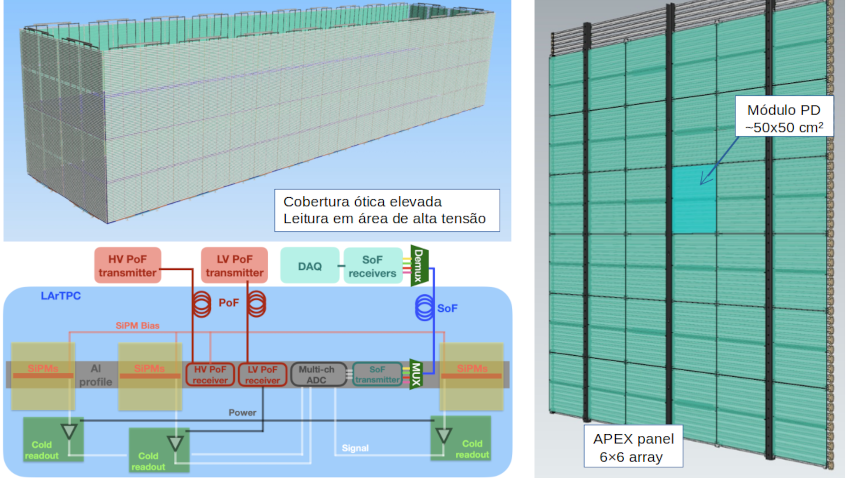ITA Physics Department Professor (IEF-F), Franciole Marinho, representing the DUNE (Deep Underground Neutrino Experiment) collaboration, presented for the first time to the external expert community of this experiment the advanced concept of a new scintillation photon detection system, APEX, proposed for DUNE's Phase II.
This presentation took place at an international conference dedicated to light detection technologies that employ noble elements as sensitive media, which was held this year in São Paulo, Brazil, from August 26th to 28th. This proposal, already in an advanced stage, brings several improvements in important characteristics, such as increased light collection and uniformity of detection response compared to the systems used in the first phase of the experiment. From a physics perspective, this means that the detection system can significantly improve the quality of observations of the effects of neutrino interactions with the liquid argon that fills the chamber. A series of prototypes is planned for the full development of the concept and is expected to occur from this year until 2026, when a large-scale test emulating the entire system will possibly be put into operation. Further details will be available in the article "DUNE Phase II: Scientific Opportunities, Detector Concepts, Technological Solutions" to be published soon in the Journal of Instrumentation. However, a preliminary version is already publicly available on Arxiv:2312.03130.
DUNE is currently one of the largest particle physics experiments in operation. It is in the development and early construction phases, involving over 1,400 researchers from more than 35 countries. It will be dedicated to the study of neutrinos, mysterious fundamental particles without charge and with very small mass. Despite being the second most abundant particle in the Universe, they are extremely difficult to detect, requiring the construction of large-volume detectors for their study. The technique to be used in DUNE consists of time projection chambers filled with liquid argon, which allow the collection of ionization charge for very precise determination of the trajectories of the charged particles that emerge from the neutrino interactions in the chamber. The reconstruction of neutrino interactions using scintillation light is one of the research topics developed by Professor Franciole and his collaborators.
In addition to Professor Franciole, master's student Valéria Vale and undergraduate engineering students Victor de Lucena and Victor Vicentin, all from ITA, are also developing their dissertation and scientific initiation projects related to neutrino physics. For those interested in more information about this line of research, we suggest the link to the Nuclear Physics area page.

